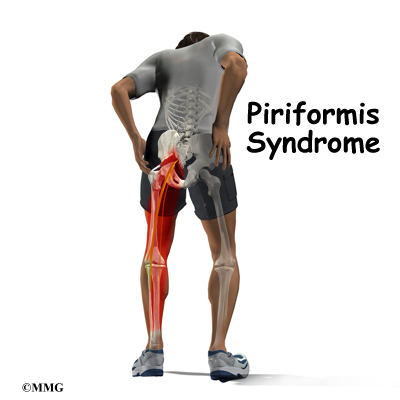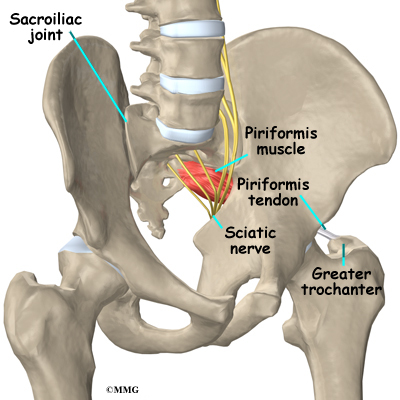It never ceases to amaze me how I never get sick (thankfully, because I'm not good at being sick as my wife will attest), but manage to get just about every orthopedic injury possible.
After herniating 2 disc in 1993, and having decompressive surgery in 2000, my back has been great save for a few months 2005 where I probably re-herniated the L5 disc. Physical therapy, steroids, and time cleared it up.
I was pretty sure this time I'd re-herniated the S1 disc space, since my symptoms were for the S1 nerve distribution. It's really not uncommon to herniate more discs throughout time even after a surgical discectomy and decompression. Once you rupture the annulus fibrosus it never heals, and aside from a very controversial procedure there is no way to actually repair it. The good news is most subsequent herniations are small, and tend to dessicate over time.
The problem was other than the straight leg raise and pain radiating down the leg into my foot, nothing else fit with nerve root compression, which I had for the better part of 8 years, and know all too well how it feels. At the same time there was definitely something irritating my sciatic nerve. As I was doing my McKenzie exercises I noticed there was no pain during them despite full range of motion in my spine. Eventually I realized this wasn't a herniated disc causing the sciatic nerve pain and associated spasm.
A little research revealed I've added a new problem to my distinguished orthopedic medical history, lets give a big hand to Piriformis Syndrome!
Welcome aboard, I'm sure you'll enjoy being part of the team!

Introduction
Pain in the buttock that radiates down the leg is commonly called sciatica. The most common cause for sciatica is irritation of the spinal nerves in or near the lumbar
spine. Sometimes the nerve irritation is not in the spine but further down the leg. One
possible cause of sciatica is piriformis syndrome. Piriformis syndrome can be
painful, but it is seldom dangerous and rarely leads to the need for surgery. Most people
with this condition can reduce the pain and manage the problem with simple methods, such as physical therapy.
This guide will help you understand
how doctors diagnose the condition
what treatment options are available
Anatomy
What parts of the body are involved?
The lower lumbar spinal nerves leave the spine and join to form the sciatic nerve. The sciatic nerve leaves the pelvis through an opening called the sciatic notch.

The piriformis muscle begins inside the pelvis. It connects to the sacrum, the triangular shaped bone that sits between the pelvic bones at the base of the spine. The connection of the sacrum to the pelvis bones forms the sacroiliac joint. There is one sacroiliac joint on the left and one on the right of the low back. The other end of the piriformis muscle connects by a tendon to the greater trochanter, the bump of bone on the top side of your hip.
The piriformis muscle is one of the external rotators of the hip and leg. This means that as the muscle works, it helps to turn the foot and leg outward. Problems in the
piriformis muscle can cause problems with the sciatic nerve. This is because the sciatic
nerve runs under (and sometimes through) the piriformis muscle on its way out of the
pelvis. The piriformis muscle can squeeze and irritate the sciatic nerve in this area,
leading to the symptoms of sciatica.
Full Article Piriformis Syndrome











Ouch! How much of a dampener (how long) does this put on your hiking??
ReplyDeleteOuch! How much of a dampener (how long??) does this put on your hiking? 'Hate to see that!!
ReplyDeleteI always enjoy your outdoor photography and commentary on choice of equipment/optics.
I have this annoying pain and its driving me nuts. First I had symphysis pubis (small gap widened during pregnancy) and then I got this. I only diagnosed myself with this after doing the diagnosis tests, i get so sore standing or sitting for long periods of time, and at my worst I cant walk, i feel the 'knot' in the top right of my butt and sumtimes get the pain in my leg, my doctors couldnt figure out what it was, what a bunch of dummies. I went to a chiro for 6 months and I stoped going when she hurt me! I hate this pain so much Ive turned into a really grumpy and depressed person :(.
ReplyDeleteI have Piriformis Syndrome too, so I created an educational site to help others with the disorder. Here are some statistics about Piriformis Syndrome that I've compiled.
ReplyDeleteThanks!
Bryan Daigle
Wow, I've been suffering from "back problems", for almost 9 years. Epidurals, Nerve Blocks, SI Joint Injections and meds, with just about 0 results. I definitely have this Syndrome and have been crippled by it for so long I am devastated and shocked that this was never looked into. I am totally disabled by this. Is there any way to improve my circumstance. I now have severe arthritis of the hip and will need a hip transplant. Also my left leg is now 1/2 inch shorter than my right. I can sit about 20-30 minutes and then it is too painful to sit. Any info would be greatly appreciated
ReplyDelete